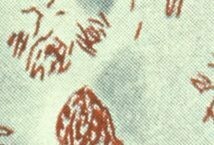Red Squirrels and Leprosy
Hugh Pennington
The ‘much loved’ status of red squirrels in Britain probably won’t be damaged by the discovery that some of them are lepers. The finding that individuals on Brownsea Island are infected with a leprosy bacterium with a DNA sequence close to that of one circulating in medieval England seems unlikely to provoke significant concerns for public health, either. We don’t hunt, skin, eat or cuddle red squirrels so the opportunities for transmission are remote.
Mycobacterium leprae, the cause of leprosy, was discovered in 1873. Pathologists and epidemiologists had been studying leprosy since long before that. But the way infection is transmitted is still less understood than we would like. And intriguing historical questions remain: why, for example, did indigenous leprosy persist in Norway until the 20th century? (Gerhard Armauer Hansen discovered the bacterium at the Bergen leprosarium.) The new red squirrel information might help.
Leprosy’s presence in Norway is well known because of the excellence of its statistics (the Norwegian National Leprosy Registry started in 1856). But it was a problem in other northern European countries too. At the end of the 19th century there were eight state-funded modern leprosariums in the Russian Baltic provinces, now Estonia and Latvia, with many rural cases near Riga, and there was indigenous leprosy in Sweden and Finland. Red squirrels are native to all these countries. Their pelts were used as currency in Finland, and hunters were active, meeting the demand for fashionable furs.
Conversely, all Scottish leprosariums (there had been many) had closed by the middle of the 17th century. The decline in leprosy coincided with wide deforestation – mass imports of pine into Scotland from Norway started about 1500 – and the consequential extinction of the red squirrel. It only came back to Scotland at the end of the 18th century after the introduction of English squirrels by the Duchess of Buccleuch and others by the Duke of Atholl.
Genotyping has shown that leprosy transmission from nine-banded armadillos to humans is occurring today in the southeastern United States. It could have happened in centuries past from red squirrels in Scandinavia, Finland and the Baltic states. The leprosy bacteria will have died long ago. Tanning will have killed them in the pelts. But it might be worth digging out old fur coats, mantles and muffs and looking for the fragmented remnants of their DNA.


Comments